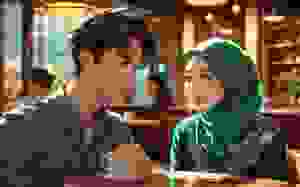Free Entry For Nyonya Kebaya Clad Visitors A Masterstroke

IN an effort to appreciate and preserve the Peranakan heritage, Melaka Chief Minister Datuk Seri Ab Rauf Jusoh said visitors to the historic city in traditional Nyonya kebaya attire will soon enjoy complimentary entry into several popular attractions, including the Melaka Zoo.
The Baba-Nyonya or Peranakan Chinese community is officially recognised as a distinct sub-ethnic group in Malaysia. They can apply to the National Registration Department to change their race status after receiving approval from the Baba and Nyonya Association of Malaysia.
The Peranakans originated through intermarriage of Chinese traders and local Southeast Asian women, a process that began as early as the 15th century, leading to a unique culture blending Chinese and Malay traditions. They settled in coastal areas and became prominent in places like Melaka, Penang, and Singapore.
Interestingly, those who have preserved their traditions can be more Chinese than Chinese in Malaysia and China, and more Malay than many Malays of today in some spheres. A good example is their passion for sarong kebaya such as that worn by Fan Bingbing in June 2024.
I grew up in Pandamaran and in the late 1950s, there was a Malay teacher at the village school who was greatly admired by the students, teachers and villagers. She had a straight back and wore sarong kebaya. Her elegance was more stunning than the stewardesses of Garuda Indonesia, Royal Brunei, Singapore or Malaysia Airlines.
The Peranakans I have spotted over the past 70 years were varied. Some looked like typical Han Chinese, while others were darker. Those I met in the 1960s and studied in English schools could not speak Chinese, as they spoke Malay at home. Tun Tan Siew Sin, who was Finance Minister from 1959-1973, spoke English and Malay.
In a masterstroke, the Melaka Chief Minister had started the ball rolling. It would be a matter of time before operators of other attractions and outlets jump on the tourism bandwagon and start offering free or discounted entries, gifts, meals or drinks. If so, demand for Nyonya sarong kebaya would swell dramatically.
And there is no better place to find the most authentic in Melaka. Tailors should keep ready stock of a great variety and be prepared to alter them on the spot or within hours so that they fit perfectly on the purchasers. As each would cost a few hundred to several thousand ringgit, buyers may not be able to recoup their investment.
But it would encourage many visitors to wear Nyonya sarong kebaya, and the thrill of being recognised is higher than the freebies or discounts. There will be sponsors to hand out best dressed awards around lunch and dinner time daily, as winners could be picked for walking along selected streets or standing on chosen spots.
Street closed-circuit television (CCTV) cameras could easily capture sarong kebaya clad ladies and judges could also vote remotely.
Sponsors must announce and reach the winners swiftly and present the award in style. Such glorious moments are to be recorded and posted on social media and likely to go viral.
If so, visiting Melaka can be enjoyed thrice. The first is anticipation, starting from arrival and reaching a tailor shop to pick the most attractive sarong kebaya and have it altered to fit perfectly. Next is the experience of wearing the beautiful dress and walking in the historic city.
Finally, after a fabulous trip is over, the fond memories of Melaka will linger and get to keep the best souvenir money can buy—the Nyonya sarong kebaya. And for those winning the best dressed award, the winning dress would be passed down as a family heirloom. If not, revisit Melaka and try again, as the fun alone is well worth it.
In the past, I have pointed out repeatedly that our tourism authorities and industry players have been claiming that our culture would attract foreign visitors. But if a foreigner were to come all the way and ask “Show me your culture”, they would be at a loss of where to go and what to show to the tourist.
We ought to bear in mind that cultural dances performed on stage with dancers wearing colourful costumes are not culture. It is cultural if performed by common folk in normal clothes when celebrating a festival in an open area near their homes. The former is just a put on show, while the latter is a genuine lifestyle and culture.
Likewise, promoting the Nyonya sarong kebaya is showcasing our authentic culture that was started 600 years ago.
Similarly, “Visit Malaysia 2026 Truly Asia” may be next year’s tagline, but its origin started in Melaka 500 ago when the Portuguese arrived to negotiate a trade agreement and found 84 different languages spoken there.
YS Chan is the master trainer for Mesra Malaysia and Travel and Tours Enhancement Course. He is an Asean Tourism Master Trainer and also a tourism and transport business consultant.
The views expressed are solely of the author and do not necessarily reflect those of MMKtT.
- Focus Malaysia.
Artikel ini hanyalah simpanan cache dari url asal penulis yang berkebarangkalian sudah terlalu lama atau sudah dibuang :
http://malaysiansmustknowthetruth.blogspot.com/2025/10/free-entry-for-nyonya-kebaya-clad.html
 PING BABAB : Raksasa Aggregator Malaysia
PING BABAB : Raksasa Aggregator Malaysia




























